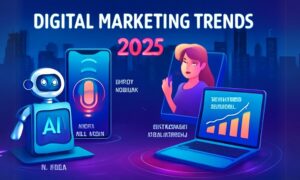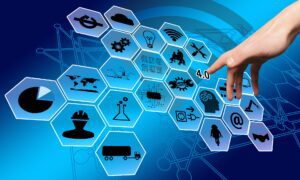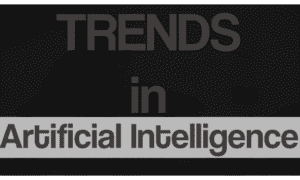Technology is advancing at an unprecedented pace, transforming various sectors and redefining what it means to be human. As machines learn and adapt, the line between human capabilities and artificial intelligence continues to blur.
This trend holds immense potential to augment human abilities, reshape industries, and influence society in profound ways. Below are seven key trends in AI that have the power to enhance human potential and evolve our understanding of intelligence itself.
Brain-Machine Interfaces: Bridging the Gap
Brain-machine interfaces (BMIs) represent a frontier that could redefine human interaction with technology. These interfaces facilitate direct communication between the brain and external devices, allowing individuals to control computers or prosthetics with their thoughts.
The implications of this technology extend beyond medical applications; they may transform how we interact with machines in our daily lives. The integration of modern AI technology into BMIs could enhance cognitive functions and expand our ability to interact in digital environments. Current studies indicate that BCIs could improve the quality of life for individuals with mobility impairments by enabling better control of assistive devices.
This fosters independence and promotes greater engagement in society, leading to increased opportunities. As research continues to evolve, BMIs may facilitate a more seamless connection between humans and technology, redefining communication as we know it.
Augmented Reality and AI: New Ways to Interact with the World
Augmented Reality (AR) paired with AI opens the door to immersive experiences that can dramatically change how we learn and communicate. AR has the potential to enhance learning by overlaying digital content on the physical world. Students can visualize complex scientific concepts through interactive simulations that blend the tangible with the digital.
This trend enriches the learning experience and facilitates better retention of information. AR can transform industries like retail, allowing customers to visualize products in their own space before making a purchase. This enhances user satisfaction and can streamline the decision-making process. Businesses may push the limits of customer engagement by using AR and AI to provide experiences that are customized to each customer’s demands.
AI Ethics and Transparency: A New Necessity
As AI systems become increasingly influential in decision-making, the discussions around ethics and transparency are more pressing than ever. Ensuring fairness in algorithmic processes is crucial to prevent biases that can arise from poorly designed systems. Prominent organizations emphasize accountability in AI development, pushing for guidelines that prioritize ethical considerations in applications across various sectors.
Lack of transparency in AI can lead to significant consequences, including misinformation and social inequities. Promoting an ethical framework will empower consumers to trust AI technologies while encouraging developers to prioritize responsible practices. This growing emphasis will shape future innovations by aligning AI capabilities with societal values and expectations.
AI in Healthcare: Revolutionizing Patient Care
The integration of AI in healthcare is already transforming diagnosis and treatment processes. From predictive analytics to personalized medicine, AI demonstrates its capabilities in enhancing patient outcomes. Advanced algorithms can analyze vast amounts of data to detect patterns, leading to timely diagnoses and more accurate treatments tailored to individual needs.
AI systems streamline administrative tasks, allowing healthcare professionals to focus on patient care instead of paperwork. This efficiency improves healthcare delivery and reduces burdens on medical staff. As AI continues to evolve in this realm, the potential for improved health outcomes and increased accessibility to medical services is enormous.
Natural language processing (NLP) tools now assist in transcribing clinical notes and extracting relevant information for faster documentation. Machine learning models help flag at-risk patients before symptoms become critical, supporting preventive care initiatives.
Chatbots and virtual assistants are being used to answer patient inquiries, improving engagement and satisfaction. Remote monitoring devices powered by AI can alert providers in real-time to shifts in a patient’s condition. These innovations support overburdened systems and pave the way for more proactive and connected care.
AI-Driven Automation: Rethinking the Workforce
As AI-driven automation integrates further into various industries, rethinking workforce dynamics becomes essential. While automation offers heightened efficiency and reduced operational costs, it raises questions about job displacement. Industries must adapt to this new reality by focusing on reskilling the workforce to meet the demands of an AI-driven economy. Organizations can leverage AI tools to identify skill gaps and develop training programs that prepare employees for future challenges. This proactive approach safeguards job security and cultivates a more adaptable workforce.
Cross-functional collaboration between tech teams and HR departments is vital in implementing successful transition strategies. In some sectors, automation can shift roles rather than eliminate them, freeing employees to focus on complex, creative, or interpersonal tasks. Governments and educational institutions play a key role by offering certification programs and incentives for lifelong learning. Transparent communication about changes helps ease workforce anxiety and builds trust during technological transitions.
The Role of AI in Climate Change Solutions
AI shows promise in addressing climate change by optimizing resource use and improving environmental monitoring. Through predictive modeling and data analytics, AI can assess environmental risks and recommend strategies to mitigate adverse effects. This technology plays a crucial role in developing sustainable solutions that help combat climate change and promote efficient resource management in various sectors.
AI can optimize energy consumption in real time, minimizing waste and reducing carbon footprints. As organizations become more aware of their environmental impact, integrating AI-driven strategies will be critical in fostering sustainability and promoting responsible practices.

AI in Education: Personalized Learning Experiences
The educational landscape is undergoing transformation through AI, which offers personalized learning experiences tailored to individual student needs. AI-driven platforms can analyze learning patterns, adapting content to suit varying learning styles and paces. This individualized approach fosters enhanced engagement and better retention of knowledge.
AI tools can assist educators in identifying students who may require additional support or enrichment. Teachers can carry out focused interventions and create a more inclusive learning environment by using insights about student performance. As AI continues to integrate into this field, it holds the potential to reshape educational methodologies and create a more equitable system for all learners.
The exploration of these seven AI trends illustrates a shifting paradigm in which artificial intelligence redefines human potential. The implications for everyday life, work, and the environment are significant. Continuous advancements will allow for a future that embraces innovation while valuing ethical considerations, collaboration, and sustainability. Embracing this change will enable society to harness the full potential of technology while prioritizing humanity’s core values.



































